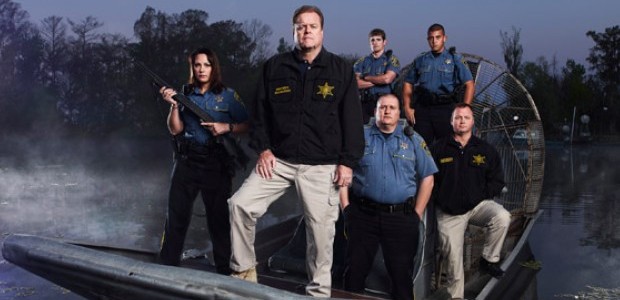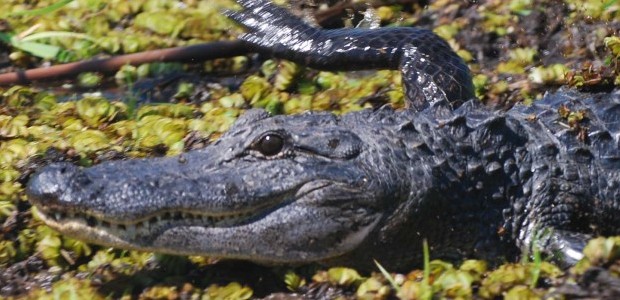
Cajun Justice: Local reality show’s contract doesn’t stipulate compensation
June 5, 2012Lawmakers rate session cautiously
June 5, 2012Quintessentially south Louisiana, the Mandalay National Wildlife Refuge is a crown jewel in Terrebonne Parish’s environmental décor.
“We don’t have many roads on this refuge,” said Mandalay National Wildlife Refuge Manager Paul Yakupzack, as he expertly backed an airboat to a private launch near the Intracoastal Waterway. “You get around here by boat.”
Mandalay encompasses more than 4,000 acres, one-fourth of which are water. All entrypoints are accessible by watercraft only – the Gulf Intracoastal or Cannons Landing. But once inside the refuge, the area’s 15 waterways unlock byways, allowing safe passage to miles of nature and Mandalay’s lone lake, Lake Hatch.
“It’s an open lake, and there is very good fishing there,” Yakupzack said. “Most people who visit the refuge are in boats, several thousand visit throughout the year, and boating and fishing draw the most visitors.”
The refuge provides anglers the year-round chance to land freshwater fish, such as largemouth bass, crappie, sunfish and catfish.
“It’s a good time of year to visit the refuge,” Yakupzack said. “The bugs aren’t bad, and neither are the temps.”
On a recent weekday, several fishers – including a few pairs, a single or two and even a family – were taking advantage of the mild spring temperatures and dropping their lines in the water.
Should you decide to drop your line in the refuge’s waters, just make sure you’re reeling in a fish, not something else, like an alligator for instance.
On a two-hour cruise, Yackupzack spotted several small-and-medium-sized gators as well as one 13-footer who quickly relinquished his resting spot to the sounds of the airboat.
“Gators are notorious of not cooperating for photo ops,” Yakupzack said, laughing. “He’s been here a while. See how the vegetation is completely matted down? Only the males get that big.”
As he buzzed across the refuge, Yakupzack pointed out an issue that the refuge is having major problems with – the predominance of water hyacinth and salvinia, two invasive aquatic plant species that are choking off access to fishing spots.
“Once the water hyacinth gets thick enough, Cuban sage grass grows on top of it,” he said as he pulled up to a very large area that at first gave the look of a meadow with three-foot high grass. A quick glance over the side of the airboat into the barely visible water told the truth of the matter.
In another area of the refuge, that salvinia was so thick that a 4-foot gator had no problem staying afloat as he walked across the carpet-like vegetation and away from the noisy airboat.
One thing that is certainly not causing a problem on the refuge is the bird population.
“We’ve got coots, black whistling ducks, egrets, yellow crown night herons and blue herons, just to name a few,” Yakupzack said as several of the species flew through the air over the Hanson Unit, the refuge’s duck hunting area.
Hunters can apply for the refuge’s youth lottery hunts each year and can score the chance to hunt in the area during the state’s youth waterfowl days.
“Duck hunting last year was better than average,” Yakupzack said. “We averaged about 3.2 ducks per person, and that’s novice and experienced hunters. That’s pretty good with a limit of six.”
According to Yakupzack, the refuge’s peak level of birds during last year’s hunting season was 6,000 ducks and 15,000 coots.
“Our youth hunts are held on Wednesdays and Saturdays,” Yakupzack said. “We allow one adult and two children, and about 25 percent of the hunters are kids.”
For those interested in deer and feral hog hunting, the refuge also offers bow hunting for both species in the fall. The dates and times for the hunts can be found in the refuge’s brochure as well as on the website.
“We have a low deer population at the refuge because the refuge has a lot of marsh area,” he said. “There is 50-acre ridge, and that’s were the population is concentrated. We see them occasionally, and their tracks, but the airboat usually scares them off.”
State estimates for the deer population at the refuge put one deer on every 37 acres.
“Lots of them move back and forth from the refuge to private lands, like the Dularge Ridge, that border the refuge,” Yakupzack said. “The deer have adapted to the environment, but there is never a high population.”
Due to small size of the refuge, hunters are only allowed to take hogs and deer with bows.
“We don’t want hunters out here with high powered rifles, and we do not want to put a big dent in the population,” Yakupzack said. “We had one reported possible deer hit last year, but the hunter was unable to locate the deer. That happens often with archery deer hunting. We usually have about two to three killed each year, but that’s out of 200 to 300 efforts, whether it is one hunter hunting 100 times in the season and 10 hunters hunting 10 times in a season. One hunter spotted an 8-point in recent years, but he couldn’t get a good shot.”
According to Yakupzack, the hog population, which does not get around well in the marshy environment, is also low on the refuge, and the animals are notorious across the state for tearing up ground and vegetation.
“The population was high about 12 years ago, but hunters have taken out quite a few of them, and the hurricanes also ran a bunch of them out. No one killed a hog this year,” Yakupzack said. “The ones we have left are smart. They learn quickly when it comes to humans.”
Besides offering fishing, hunting and boating opportunities, the refuge also offers the perfect place for wildlife study.
Louisiana State University graduate student Nick Smith and his field assistant Sara Norton have been studying the migrations of the American bald eagle population within a 50-mile radius of the refuge since late January.
“We’ve caught nine of them, not on the refuge, but on bordering private property,” Smith said. “We just need one more, and we are heading to Westwego today to try and get one. Eighty-two percent of active nests in the state are in the 50 mile radius.”
Once the birds are caught, they are outfitted with a satellite transmitter that is solar powered.
“I get updates every morning on where the birds are,” Smith said. “One of the birds has already made it to Canada. The four sub-adults are on the move, and the adults will migrate later in the year.”
Smith hopes get two more migrations out of the data and will write his thesis based on results of tracking.
“The state has been wanting to track the migratory patterns of these birds for a while,” Smith said. “The eagles in this state are not really seen from June to August – they seem to leave with the heat [of summer], and we didn’t know where they were going. Now we know they are heading north. Florida has eagles that stay year round, but some of them do head to Canada as well.”
An alligator makes its way through the marsh of Mandalay National Wildlife Refuge. Gators in the refuge are plentiful and can usually be spotted sunning along local waterways during the spring and summer months.













